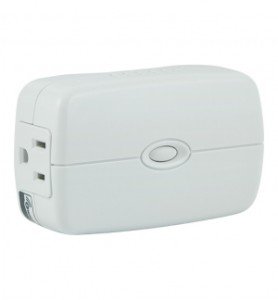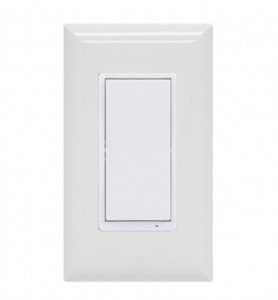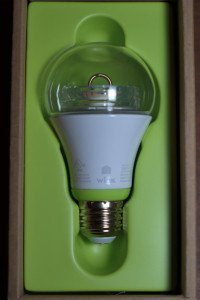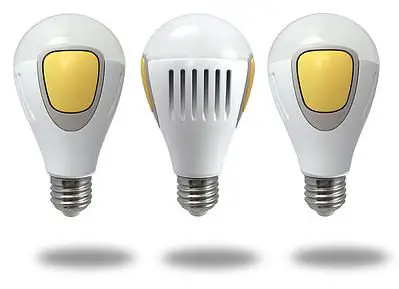So, you’re getting into home automation and you won the battle (link to waf article) of teaching your spouse how to use your home automation.
Congratulations, you’ve already made it farther than most and you should be proud of your accomplishment.
I can imagine that you’re pretty happy with your smart home setup but if you’re anything like me, you still have those occasional visitors that throw a wrench into the works by turning off one of your smart devices that you’ve automated or flipping the switch off on a Ring Floodlight camera.
If that’s you, then you’ve come to the right place. I’m going to lay out the problems that I’ve come across and give you some options for each of them.
1) You have a plug-in smart switch or smart bulb for a lamp, but people keep turning the lamp off
 It’s an honest mistake right, let’s say you don’t have a luminescence sensor to turn your lights off in the morning and instead, you have a timer set up to turn the lights off after the sun rises. Or, your visitors want to turn a lamp off when everyone goes to bed instead of just waiting for your “Good Night” scene once everyone is settled in their rooms.
It’s an honest mistake right, let’s say you don’t have a luminescence sensor to turn your lights off in the morning and instead, you have a timer set up to turn the lights off after the sun rises. Or, your visitors want to turn a lamp off when everyone goes to bed instead of just waiting for your “Good Night” scene once everyone is settled in their rooms.
What do you do?
Well, you have a few options:
- If you have the twist type of switch on your lamp, simply unscrew the post and put it in a drawer where you won’t lose it. That way, it’s impossible to turn the lamp off.
- If your lamp has a pull chain, you may be able to disconnect part of the chain. It may not prevent a determined guest, but it may give you enough time to explain why you don’t turn your lamp off.
- If those don’t work in your situation, you may be forced to resort to a piece of tape or a small note
Next, read our thoughts on when smart plugs are best.
2) You have a camera connected to your flood light, but people keep turning the switch off
 This probably won’t hit too many people, but it can be a problem depending on how tough it is to run new wires with your house plan. Let’s say you didn’t feel comfortable running a new CAT6 cable to a new camera and bought a Ring Floodlight camera instead. Guess what? Now, you have to leave the power on to your floodlight all the time.
This probably won’t hit too many people, but it can be a problem depending on how tough it is to run new wires with your house plan. Let’s say you didn’t feel comfortable running a new CAT6 cable to a new camera and bought a Ring Floodlight camera instead. Guess what? Now, you have to leave the power on to your floodlight all the time.
So, how do you keep a forgetful spouse or guest from trying to turn off your lights? I’ll order these from easiest to more involved/robust.
- A piece of masking tape over the switch or a small note conveys the idea without being awfully tacky.
- Just remove the switch and connect power 24/7! Of course, this only works if you have a motion sensor or light sensor to control when your lights come on. Otherwise, your lights are on all the time and that’s wasteful and annoying. Want to control your lights manually? Keep reading.
- Install a switch guard that makes people think twice before flipping the switch
- Plastic - on smile.amazon.com
- Magnetic (cool idea!) - http://amzn.to/2suJNdB
- Remove the low-tech switch and install a smart switch (I’m on Z-wave mostly, but Zigbee and BLE options are becoming more common). Then, instead of hooking up the load wire to the switch, just wire it to the incoming line to constantly power your camera. Then, you can set up your hub to control the camera smart bulbs in the other fixtures yet leave your camera turned on.
If all else fails, put electrical contacts on each side of the switch and wire up a small "stimulus" for training!
Just kidding :)
No really, don't do that . . . unless you have a medical TENS unit, then have a blast!
3) You have smart bulbs in a room, but people keep flipping the switch off
 This one’s simple. Instead of your smart bulbs, pull them out and install a smart switch or dimmer. That way, your guests can manually control the lights, and still get the rewards of your existing automations.
This one’s simple. Instead of your smart bulbs, pull them out and install a smart switch or dimmer. That way, your guests can manually control the lights, and still get the rewards of your existing automations.
Granted, if you are using colored bulbs like Osram or Hue bulbs, you’ll be out of luck with this option. Instead, you’re stuck also putting in a smart switch, bypassing the switch to connect the power to the bulbs all the time, and using the smart switch to control a scene with the bulbs to turn them on and off.
But, that’s just if you still want manual control. If your light automations are good enough that you never need to manually control the lights, consider just removing the switch and installing a solid plate over the box.
What else?
Have a different problem with your home automation gear?
Let me know in the comments, and I’ll help you out.

Hi, I’m Jody. I graduated with honors with a Masters of Science in Computer Engineering and have over 15 years of experience working as an engineer with electronics products. I’m a lifelong learner and tinkerer and enjoy automating things around the house so I can solve bigger problems than getting out of bed to check if the garage door is closed . . . like too little sleep!
